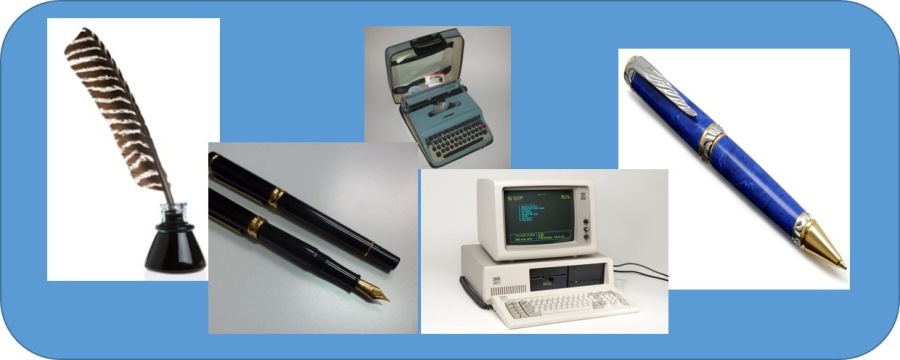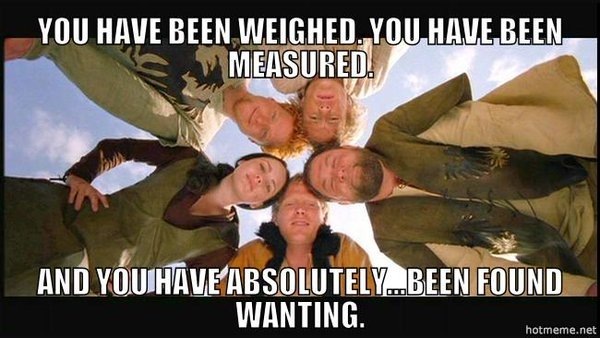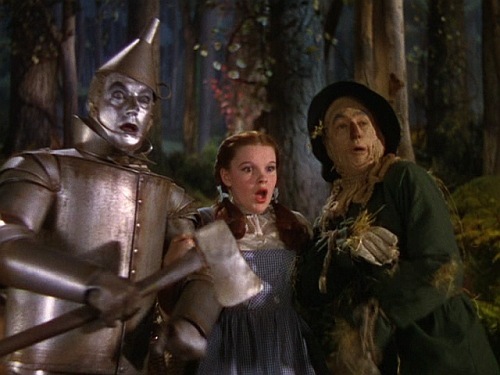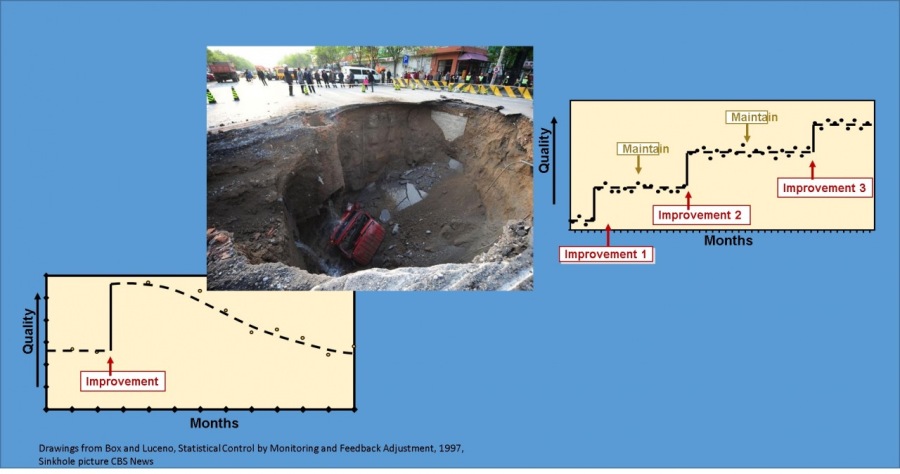The Journey of the Late Adopter: Installment 1: 1994

I often joke, “If you look up ‘late adopter’ in the dictionary you’ll find a picture of me.”
It is not my intention to be such a technology laggard; it just takes me a while to see the usefulness of the latest and greatest technology. Sometimes this works to my advantage: I took so long to get interested in 8-track tapes that I totally missed the incursion of that particular music format. On the other hand I still own about 400 albums of vinyl and, yes, I still have a turntable. Good news vinyl is coming back.
My kids laugh at my laggard ways and the fact that I hang onto everything, forever. I’ll have the last laugh as they clean out my house later, but they probably won’t hear me then.
Strangely enough, I work in the change field and so I deal with “resistors” all the time. Perhaps I’m good at it because I identify with those who are slow to see the value of a “new way” just because it’s “new.” Then I found this piece I wrote in 1994 and I thought I would share it, and some of my progress since that time, in the hopes that those introducing the latest gadget or trying to implement change might get an inkling of the whys and wherefores of late adoption. So here is the first of the series:
1994: COPING WITH TECHNOLOGICAL CHANGE
I didn’t realize it then, but I grew up immersed in the paradigm shift of massive rapid technological change that is still gripping our world.
My father was high school educated and, though he wanted to study music, his father insisted that he learn the family trade, printing, and take over the Culler print shop In Lakeland Florida. “You can always study later.” Later came, my grandfather died, and my father was a printer. He sold the Culler print shop together with a Heidelberg 4-color press, which cost $10,000 1944 dollars, because he couldn’t get qualified help during World War II. He moved my mother and two sisters north to Boston to ultimately set type on a “hot-metal” linotype machine for the Boston Herald-Traveler. I was born in 1947.
My mother was college educated and every inch the Southern lady. She taught math to high schoolers and, though she really would have loved to stay at home to nurture her children, she found full time office work when I was about eight years old to help make ends meet.
In 1956 my mother went to work for Raytheon to learn to program a building-sized computer, using key punched oak-tag cards. I remember those oak-tag cards that my mother kept standing on end in boxes in her room, and I remember a day when I discovered that they made the most beautiful rocket-dart airplanes. I can still see my mother standing in the doorway, looking at me on the floor of that room, surrounded by hundreds of loose oak-tag cards, throwing rocket-dart airplanes out the open window. I remember her sobbing. Those cards were probably six months of work. Blissfully, she has forgotten.
My parents were older than those of my friends. I suppose I thought about their grey hair and was embarrassed by their old-fashioned ways, but I never put that together with their age. I grew up calling refrigerators “ice boxes” and cars “buggies,” not thinking about the connection to a long gone life.
My father would take me to “the shop,” as he called the newspaper where he worked. It was a magic place with big banging machines. By the time I was ten, I’d had the tour at least twenty times: from the locker room to put on a duster (Dad always wore a white shirt and tie to work) to the newsroom where reporters banged out stories on old Remington typewriters to the editors’ office where stories were “blue-penciled” and whisked away by “copy boys” to the composing room where my dad worked. Everywhere big men called out, “Hey, Reb, that your boy?” (My Dad is now 88 and the Southern accent has never left him).
The composing room was hot. Rows and rows of linotype machines with hot lead making “slugs” of type to set the copy kept the room hot and noisy. I used to have scores of those lead slugs with my name spelled backwards. I wish I had them now.
My mother’s place of work at Honeywell was hospital quiet by comparison, rabbit warrens of grey tight weave carpet and padded cubicle dividers. At the Herald, Irish and Italian mixed with other white men, punctuated by the occasional black face all shining in the incandescent-lit cavern. At Honeywell, there were women as well as men, Chinese and Indians, white, black, brown, yellow, liberally stirred together in a soft blueish florescent light that bore no relation to nature.
Computers eventually took over the setting of type. My Dad saw it coming and though people generally listened when he spoke, he could not convince the members of his union of what was happening until the new computers were installed and reporters were about to type their stories directly into them. Then the Typographers Union had a brief, unsuccessful strike and my Dad retired at 62 rather than go on nights at the Record American, the only Boston newspaper still setting type. (It was the right decision; four months later the Record made the same move.)
The computer my mother first worked on at Raytheon took up three floors of a substantial warehouse. When she retired she was amazed at the power of desk-sized minis. Now computers of greater power fit on your lap.
Technology always changes. Ice companies give way to refrigerators, harness manufacturers give way to automobiles, computer type-setters give way to desk top publishing. Mostly what is required of us in this process is the ability to renew ourselves, to learn quickly to not be wedded to the past, to be flexible and creative enough to continue to build. Given my background, I should have had a head start on this process, but I live in a “restored” nineteenth century house and dream about wooden boats, clockwork watches and 1950’s British sports cars. I still write in long hand. (I'll hire my girlfriend to type this.) I do, however, use a ball point pen. Don’t rush me; I‘m working on it.
Alan Cay Culler
June, 1994
August 2016
I have actually made a lot of progress on my journey since 1994. I’m typing this into Word on a Windows 10 machine and I own an iPhone, (albeit a 4S, that bought in 2012 when my flip phone died.) I married my 1994 girlfriend and we now live in an early twentieth century house. I have also come a long way with computers. (More on that journey in installment 2.) And I’m still working on being a little less of a late adopter. I still wear clockwork watches, but I wear a Fitbit on the other wrist. Yes, the Fitbit has a watch too – a digital watch, but I’m not giving up my 1920s to 1950s watches. For me, it’s about more than the time and unfortunately those watches don’t count steps. In the next installment, I’ll share a bit more of what makes the late adopter tick.
"
Articles from Alan Culler
View blog
Heath Ledger, Mark Addy, Paul Bethany, Laura Fraser, and Alan Tudyk in the 2001 Columbia Pictures Fi ...

"Lions and Tigers and Bears, oh my!" Jack Haley, Jody Garland, and Ray Bolger in the 1939 MGM film " ...

Continuous Improvement (CI) is a discipline that has been around in the United States (at least) sin ...
Related professionals
You may be interested in these jobs
-
CEO - Own your own Franchise
Found in: Jobgoal US C2 - 3 days ago
WilliamsonHeckt Careers Hilo, United States Permanent, Full timeDo you want to own your own business? · You are not alone, approximately 85% of the new franchise owners were professionals transitioning out of the corporate grind, and 25-30% keep their job and run their business on the side. · Our firm works closely with individuals who are op ...
-

CDL General Laborer
Found in: MyJobHelper US C2 - 4 days ago
Congruex LLC Eau Claire, United StatesJob Title: General Laborer · Business Unit: WhiteCo, a Congruex Company · Department: Construction · Reports To: Field Superintendent · Employment Status: Full-time, Non-Exempt (Hourly) · Job Summary: · We are looking for an Underground Construction General Laborer to join our gr ...
-
Optometrist
Found in: One Red Cent US C2 - 6 days ago
National Vision North Charleston, United StatesJob Description · Primary care is more than prescribing contacts and eyeglasses. Our optometrists report seeing a high amount of anterior and posterior segment pathology in their practices. They manage ocular disease to their comfort level, including but not limited to: · Treatin ...


Comments
Gloria (Glo) Ochoa
6 years ago #3
LOL...but by then, Alan, all the bugs will be gone so the frustration learning curve will be much easier for you. ;)
Alan Culler
6 years ago #2
Thanks for your comments @Gloria Ochua Depends on how far behind I follow :-)
Gloria (Glo) Ochoa
6 years ago #1